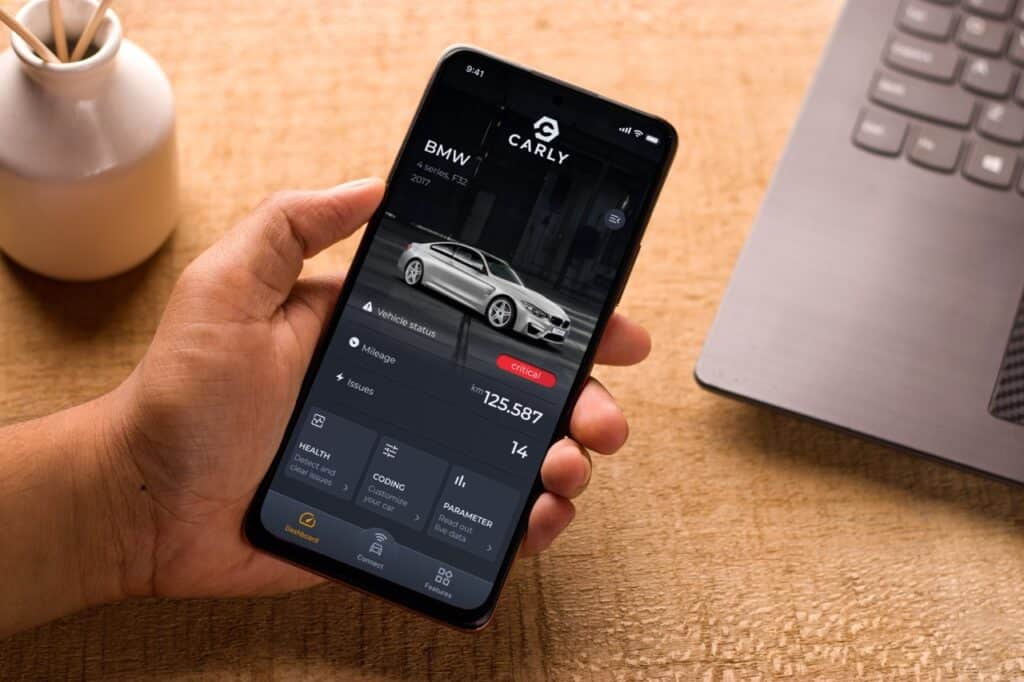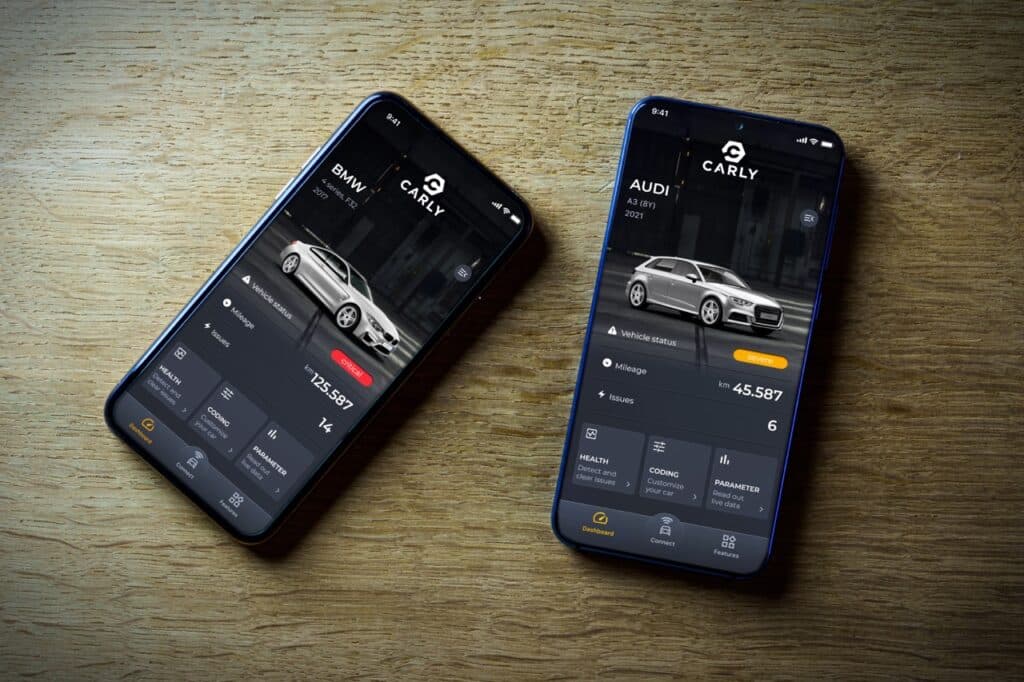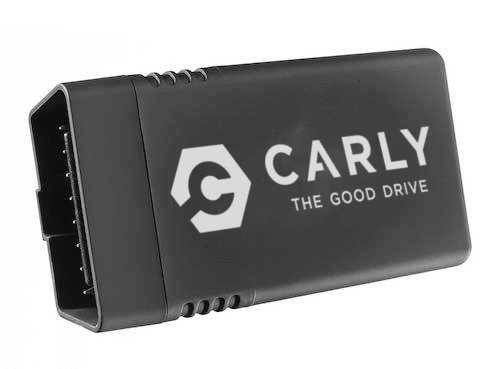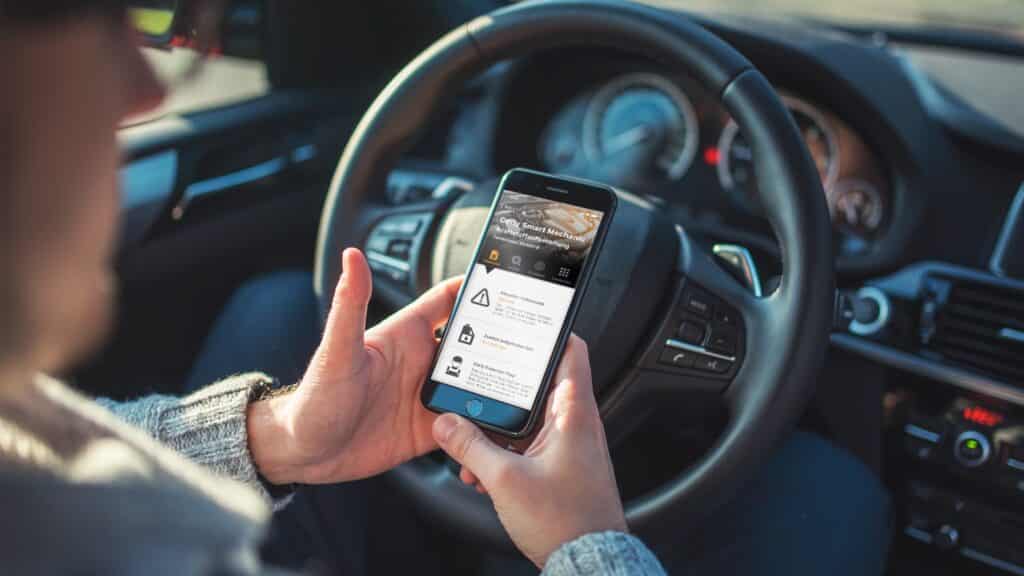Struggling with DPF clogs and warning lights? A straightforward solution awaits right at your fingertips. This article rounds up the best DPF regeneration apps, including the top-rated dpf regeneration app android, to simplify your diesel engine maintenance. With instant monitoring and regeneration control, learn how these apps can keep your vehicle running efficiently without the guesswork.
Key Takeaways
- DPF regeneration apps for Android, like VAG DPF, Carly OBD, and Torque Pro, provide tools to monitor and manage DPF health, encouraging regular maintenance to enhance vehicle performance and prevent costly repairs.
- The Carly app stands out with its capabilities for in-depth diagnostics, DPF regeneration monitoring, smart mechanics, and vehicle customization, serving as a comprehensive tool for various car makes and models.
- Compatibility between DPF regeneration apps, vehicles, and OBD2 adapters is critical; users must ensure an app supports their car’s make, model, and engine software before use, and choose the correct ELM327 adapter variant.
Exploring the Best DPF Regeneration Apps for Android Devices

Thanks to advancements in technology, DPF regeneration apps such as VAG DPF, Carly OBD, and Torque Pro seamlessly monitor and manage DPF health from your Android smartphone. With these apps, tracking regeneration modes, prompting manual regeneration, and interpreting DPF data has never been easier. As such, selecting an appropriate DPF regeneration app for your Android device becomes a key factor in maintaining a clean diesel particulate filter and promoting efficient engine performance.
Yet, with the myriad of apps available, how do you sift through the noise to find the one that best fits your needs? The answer lies in understanding the importance of regular DPF maintenance and identifying the essential features of a DPF regeneration app.
Importance of Regular DPF Maintenance – DPF Regeneration App Android
The longevity of your vehicle significantly depends on the health of the DPF particulate filter. Regular regeneration, whether passive or active, of the DPF is required for its prolonged functionality. Ignoring the DPF warning light can lead to soot buildup, necessitating manual regeneration by a professional, and in severe cases, replacement of the filter. Regular DPF regeneration is necessary to prevent the clogging of the DPF, which can lead to reduced fuel efficiency and costly repairs. Hence, it is important to ensure that the DPF is regularly regenerated to maintain optimal performance..
So, the question arises – how can regular DPF maintenance be ensured? This is where DPF regeneration apps come into play. Equipped with features for tracking regeneration modes, possibly prompting manual regeneration, and interpreting DPF data, these apps simplify the maintenance process.
Essential App Features
A good DPF regeneration app should offer features that enable you to:
- Monitor soot levels within the DPF
- Manage and track regeneration cycles effectively
- Provide real-time information on soot deposition rate and DPF temperature during regenerations
- Facilitate daily monitoring through data logging
- Display soot mass readings accurately, ranging between 0-5g in a clear state to approximately 30g just before regeneration is necessary.
Free versions of DPF apps, such as VAG DPF, furnish basic information like the time of the last regeneration and soot accumulation, whereas the paid versions offer more detailed insights like temperatures and estimations of ash content. Therefore, the choice of the right app hinges on the scope of information you require and your budget constraints.
The Carly App: Your Android Partner for DPF Health

One standout in the world of DPF regeneration apps is the Carly app. Carly provides quick access to a vehicle’s main data, including the status of the Diesel Particulate Filter (DPF). Depending on the car brand, Carly offers a variety of features such as full diagnostics, fault code repair utilizing Smart Mechanic, monitoring and handling live engine data, and performing used car checks. With Carly, you can request DPF regeneration, monitor DPF health, and access comprehensive vehicle data for various makes and models.
What sets Carly apart is its capability to monitor DPF regeneration, deliver in-depth vehicle diagnostics, and proffer sophisticated customization options. Let’s scrutinize these features more closely.
Monitoring DPF Regeneration with Carly
Carly’s robust functionalities include:
- Error code interpretation
- Assisting with Diesel Particulate Filter (DPF) regeneration
- Tracking real-time data including soot mass and other relevant metrics to evaluate the condition and performance of the DPF
- Offering visual indicators such as the DPF symbol color change and percentage of fullness to show the soot level and active regeneration state
In essence, the Carly app for Android is designed to enable effective monitoring and management of the DPF regeneration process, making it an invaluable tool for maintaining optimal vehicle performance.
Beyond Regeneration: Comprehensive Vehicle Diagnostics
The Carly app offers the following features:
- DPF regeneration monitoring
- General vehicle diagnostics, including reading and clearing fault codes
- Complete check of all control units related to the DPF system
Diagnostic sessions using Carly can be crucial for resolving fault codes and troubleshooting DPF issues.
Moreover, the app’s smart mechanics features aid in predicting potential problems in the vehicle, enhancing preventive maintenance strategies. This comprehensive approach to vehicle diagnostics makes Carly a good app for users seeking to optimize their vehicle’s performance on Android smartphones.
Customizing Your Car with Carly Coding
Taking the app’s functionality a step further, Carly includes a vehicle coding feature that opens up advanced customization options for users to modify their car’s electronics and features. Although the availability and extent of customizations can vary depending on the user’s car brand and model, users can personalize various vehicle settings such as configuring the start/stop function, door locking behavior, and headlight functionality to enhance their driving experience.
From monitoring DPF regeneration and comprehensive vehicle diagnostics to advanced customization options, the Carly app offers a wealth of features that can help you keep your vehicle performing at its best.
Ensuring Compatibility: Matching Apps with Your Vehicle
DPF regeneration apps, while adept at monitoring and managing DPF health, require compatibility with your distinct vehicle make, model, and its software version for flawless functioning. They necessitate an OBD2 dongle to interact with the vehicle’s diagnostic system.
Moreover, the correct OBD2 adapter, following the ELM327 standard, is necessary to facilitate communication between the app and the vehicle’s diagnostics. So, how can one ensure compatibility among the app, the vehicle, and the adapter? Let’s investigate this aspect further.
Supported Engines and Cars
To maximize the benefits of your DPF regeneration app, it’s essential to confirm its compatibility with your vehicle’s make, model, and engine software version. For instance, the VAG DPF app for Android is specifically tailored for VAG car owners with compatible engines and the right sw version. By using the vag dpf free version, you can test its functionality before upgrading to the full version. Supported VAG car models include:
Diesel vehicles, such as vag cars, have been a popular choice for many drivers due to their fuel efficiency and durability.
The app supports a broad spectrum of engines including, but not limited to, DETA, CRBC, and CUNA, while acknowledging that some engines might have limited support. Beyond the VAG group, other car brands like Ford with Euro5 and Euro6.2 standards are also supported by DPF apps such as the Fdpf app. With cduc engines tested successfully, this highlights the importance of checking app compatibility with your vehicle before installation.
Choosing the Right Adapter

Choosing the right OBD2 adapter is just as important as selecting the right app. The ELM327 adapter, for instance, is crucial for connecting DPF regeneration apps with the car’s ECU, using a standardized set of instructions for app-software interaction. To ensure a successful connection and randomly find decent adapters, users must:
- Input accurate connection settings, like IP address and port number
- Manually pair devices with common PINs
- Troubleshoot Wi-Fi perceptions that may prevent proper DPF app functionalities.
For optimal performance with specific DPF regeneration apps such as VAG DPF, users are advised to select the appropriate ELM327 dongle variant, such as Bluetooth or Wi-Fi, as recommended by the app providers. This ensures seamless communication between the app and the vehicle’s diagnostics, providing accurate and reliable DPF health tracking.
Practical Guide to Using DPF Regeneration Apps
Having discussed the advantages of DPF regeneration apps and ways to ascertain compatibility with your vehicle, let’s now shift our focus to the practical usage of these apps. After installing the app, users must grant the necessary permissions for the app to function properly, including access to the vehicle’s information. The app is usually downloaded from the Google Play Store, and users may need to ensure they have the latest version of the app installed. In the realm of app development, DPF regeneration apps are designed to provide users with an efficient way to manage their vehicle’s DPF system.
Conducting regular DPF scans with the app to monitor levels of soot and other particulates is a key practice for effective DPF monitoring. This allows for timely intervention before the filter becomes excessively blocked. How exactly should we install, set up, and initiate daily scans? Let’s dig deeper into this.
Installation and Setup

To install a DPF app, you will need an Android smartphone and an OBD2 scanner, which will plug into the vehicle’s diagnostic socket. The DPF app can be downloaded directly onto your Android device through the app store. After downloading the VAG DPF app, users should pair it with a compatible OBD2 dongle, such as the Carista dongle, using the Bluetooth feature on their Android device.
This installation and setup process ensures that the app, acting as a dpf monitor, is ready to provide you with real-time data on your vehicle’s DPF health, helping you maintain optimal vehicle performance.
Conducting Daily Scans
To effectively monitor DPF health, conducting daily scans is recommended. Daily scans are essential for monitoring the DPF particulate filter’s condition and identifying the appropriate timing for regeneration by tracking parameters such as soot mass, oil ash mass, and time since the last regeneration. To conduct daily scans, users should connect their DPF regeneration app to the vehicle using an OBD2 device and select live data parameters like soot mass and oil ash mass for real-time monitoring.
An accurate DPF Check should be initiated immediately after connecting to the OBD app to reveal the masses of soot and ash in the filter, which helps confirm the necessity of a DPF regeneration. By conducting daily scans, you can ensure the longevity and efficiency of your vehicle’s DPF.
Troubleshooting Common App Issues
As with any technology, DPF regeneration apps may occasionally face issues. Even though these are generally uncommon, being equipped with the know-how to troubleshoot common app issues like connectivity problems and inaccurate data readings is important. Understanding how to troubleshoot these issues ensures optimal app performance and accurate DPF monitoring.
Although there have been no explicit instructions given for troubleshooting common app issues concerning connectivity or counterfeit adapters, it can be inferred from general knowledge that troubleshooting steps may encompass:
- Reinserting the adapter
- Confirming no other Bluetooth connections are active
- Rebooting the phone’s Bluetooth function
- Terminating other OBD applications
- Restarting the smartphone.
Resolving Connectivity Challenges
Connectivity issues between the app, OBD2 dongle, and vehicle can sometimes occur. To achieve a successful connection, the diagnostic scanner should be connected to the vehicle first, followed by turning on the vehicle’s ignition, and then linking the DPF regeneration app with the scanner and the car. If the app cannot connect to the OBD adapter, troubleshooting steps include reinserting the adapter, ensuring no other Bluetooth connections are active, restarting the phone’s Bluetooth function, closing other OBD applications, and rebooting the smartphone.
If the connection problems remain unresolved after attempting general troubleshooting, users are advised to use the ‘Report a problem’ feature within the app to get help from technical support. This ensures any connectivity challenges are resolved and the app can function optimally.
Addressing Inaccurate Data Readings
Inaccurate data readings regarding soot and ash masses in the DPF require attention to ensure the health and longevity of the vehicle’s diesel particulate filter. To address discrepancies in important data related to readings, it is recommended to run a diagnostic session to check for any issues that might be causing the inaccurate figures.
Any faults that are identified during the diagnostic session should be repaired before attempting the DPF regeneration process to ensure accurate readings and effective maintenance. By addressing inaccurate data readings, you can ensure that your DPF regeneration app provides reliable and accurate data for optimal DPF health and vehicle performance.
Cost-Effective DPF Management
The emergence of DPF regeneration apps has simplified cost-effective DPF management like never before. These apps vary from free versions comprising basic tools to paid and subscription-based versions that offer more extensive features and continuous updates. While free DPF regeneration apps provide limited diagnostic tools, paid apps enhance your capabilities with more advanced diagnostic and support features.
Paid DPF regeneration apps can become more cost-effective with promotions, such as the current 30% off on the Lifetime subscription for GaragePro app. So, how should one decide between a free or premium app, and evaluate the worth for the money? Let’s delve into these considerations.
Free vs. Premium Features
Free DPF regeneration apps provide basic diagnostic tools and some level of customer service, assisting with tracking DPF health and conducting basic diagnostics. However, the paid versions of DPF regeneration apps offer a more comprehensive set of diagnostic tools and better customer support, enhancing your DPF monitoring capabilities.
While the free versions are beneficial, it is recommended to install and test the free version of the app before investing in the full, paid version to ensure compatibility with your vehicle. This allows you to explore the app’s features and functionality before committing to a purchase.
Assessing Value for Money
When choosing a DPF regeneration app, it’s crucial to assess value for money. This involves comparing the features the app offers to the cost incurred. Choosing the most suitable DPF regeneration app requires aligning the features with your individual needs and preferences against the price of the app.
Subscription-based DPF regeneration apps afford users with perks such as live data monitoring, regular updates, and a comprehensive library of diagnostic tools, enhancing the long-term value of the app. By assessing value for money, you can choose a DPF regeneration app that meets your needs without breaking the bank.
Maintaining DPF Health: Tips and Best Practices
Vehicle performance largely hinges on DPF health. When correctly maintained, a Diesel Particulate Filter (DPF) can continue functioning well over 100,000 miles without the need for specialist cleaning, largely contingent on vehicle usage conditions. The use of a DPF regeneration app helps prevent reduced fuel efficiency, clogging of the DPF filter, and expensive repairs by facilitating real-time monitoring and initiating the regeneration process as necessary.
However, employing a DPF regeneration app is not the sole best practice for DPF maintenance. Choosing the right type of engine oil is also vital as certain oil additives can result in DPF blockage, adversely affecting filter health and function. Let’s explore more tips and best practices for maintaining DPF health.
Healthy Driving Habits for DPF Longevity

Adopting healthy driving habits can significantly improve DPF longevity. Here are some tips:
- Drive on highways or fast A-roads to achieve the exhaust temperatures necessary for passive DPF regeneration.
- Take frequent long drives at higher speeds to increase exhaust temperatures and enhance passive DPF regeneration.
- Maintain speeds over 40mph for at least 10 minutes regularly to support the active regeneration process and avoid DPF blockage indicators.
A drive lasting 30 to 50 minutes at a sustained speed on a major roadway is recommended by manufacturers for optimal DPF self-clearance. Avoiding short trips that do not allow the vehicle to reach the necessary exhaust temperatures can prevent DPF blockages, emphasizing the need for longer excursions. By adopting these driving habits, you can support passive and active DPF regeneration, ensuring the health and longevity of your DPF.
Scheduled Maintenance and Professional Checks
Regular maintenance and professional checks are also crucial for DPF health. Diesel Particulate Filters (DPFs) should undergo professional maintenance cleans to eliminate accumulated soot, which are recommended to be performed every six months. These maintenance cleans prevent blockages by reducing the soot burn-off temperature within the DPF.
If there is a noticeable loss of power, reduced fuel economy, or if a warning light appears on the dashboard indicating a DPF issue, a DPF clean may be necessary before the six-month interval.
Summary
In conclusion, DPF regeneration apps can play a crucial role in maintaining vehicle performance by monitoring and managing DPF health. From top apps like VAG DPF, Carly OBD, and Torque Pro to ensuring app compatibility with your vehicle, these tools empower users with real-time data and control over their DPF. By understanding the features of these apps, troubleshooting common issues, and assessing value for money, you can effectively use these apps for optimal DPF health and vehicle performance.
Frequently Asked Questions
Can you manually do a DPF regeneration?
Yes, you can manually initiate a DPF regeneration process using a scan tool to command the engine to run at a higher temperature and burn off the accumulated soot. It’s important to follow the prompts on the scan tool for the procedure.
What are some of the best DPF regeneration apps for Android?
You can consider using VAG DPF, Carly OBD, or Torque Pro as they are among the best DPF regeneration apps available for Android.
How can the Carly app help monitor DPF regeneration?
The Carly app can monitor DPF regeneration by tracking real-time data, such as soot mass, to evaluate the DPF’s condition and performance. This can help ensure optimal functioning of the DPF.
How do I ensure compatibility between the DPF regeneration app and my vehicle?
To ensure compatibility between the DPF regeneration app and your vehicle, verify that the app is compatible with your vehicle make, model, and software version, and use a compatible OBD2 dongle to interface with the vehicle’s diagnostic system.
How do I conduct daily scans with the DPF regeneration app?
To conduct daily scans with the DPF regeneration app, connect it to your vehicle using an OBD2 device and select live data parameters for real-time monitoring. This will help you keep track of soot mass and oil ash mass regularly.

